December 2015
ART Newsletter
Interview with Jane Mukuninwa, City of Joy
By Aida Rocci
Jane Mukuninwa’s meeting with V (formerly Eve Ensler) in 2007 helped lead to the creation of City of Joy, a transformational leadership community for women survivors of violence, located in Bukavu, Eastern Democratic Republic of Congo. Jane graduated with the first class at City of Joy. She now works as a staff member, helping women to transform their pain into power.
Aida Rocci: How did you first meet V?
Jane Mukuninwa: V came to visit women who were physically destroyed at Panzi Hospital in May 2007, myself included. Her mission was to ask us what we wanted, what she could do for us. We were fed up with people who made promises but never kept them. When V insisted on knowing what we wanted, I simply took the floor and answered that we wanted a shelter where we could heal, tell our stories, and empower ourselves. We wanted to take our destinies in both hands and break the chains of slavery and suffering. We answered without relying on Eve’s fulfilling her promise.
AR: You were one of the first graduates of City of Joy. Could you describe what City of Joy is, and your own experiences in this community?
JM: City of Joy is a place. It is a place where joy, self-confidence, love, hope, and ferocity are regained after a period of trauma, isolation, despair and uncertainty. It is a place of healing from pain. It is a place of revolution and change. It is like a paradise where everything is looked at from a positive perspective. It is a community of people who care.
I went through unbelievable situations. My body was tortured and destroyed. I went to the hospital and had many surgeries. I came traumatized and hopeless, but the City of Joy community helped me turn into a woman filled with an irresistible feeling of plenitude and self-esteem. The City of Joy community gave me a new portrait of myself that contrasted with the image I had from before, when the sensation of an existential gap hindered me, and when everything looked absurd and dark. I found long-lost joy, love, happiness and hope for the future.
AR: Why is this community called “City of Joy?”
JM: Women who come from their villages carry a burden of trauma and are unable to speak. Many believe they have lost hope and can’t do anything better. When they enter City of Joy, they start breathing the air of joy because they are embraced. They smile for the first time after they have been assaulted and they find people who want them to feel at ease. They find for the first time people who tell them they are beautiful and the community needs them because they are amazing, brave women. They find for the first time a community of people who value, respect and love them. All the activities that are done in this community allow every woman to take initiative, and to help and encourage each other. In my experience, love has more power than medicine to heal people who have been traumatized and rejected by their communities.
AR: After entering City of Joy, you changed your name from Jeanne to Jane. Could you discuss why you made this change?
JM: I was Jeanne before I came to City of Joy and have become Jane after my training. Jeanne is old and Jane is young. Old Jeanne was full of self-pity, hatred and suffering. Old Jeanne complained about the world that rejected her. She believed she was the worst person in existence. She had no vision, and was begging. New Jane was born from City of Joy. She is full of power and joy. She is a leader who helps other women who went through the same experience as her to follow the path that leads to self-acceptance, to victory over trauma, and to revolution. She is a woman who is economically empowered.
AR: What is your role at City of Joy today?
JM: Currently, I serve as a model example of women who have turned their Pain to Power and who are committed to teaching other women to know and demand their rights and duties, raise their voices, and fuel a revolution to end all sorts of violence against women. I teach them to use what they went through as a tool of revolution. I also teach them to use drums, songs and dance as some of the techniques of healing.
AR: You are also part of the One Billion Rising campaign to end violence against women. What does “rising” mean to you?
JM: For me “rising” means to stand up against violence against women, to alert the power players and condemn the recrudescence of the violation of women’s rights, to break the silence and the chains of muteness and powerlessness, and to speak for those who can’t dare speak out. Rising means taking up space and denouncing what people fear to denounce publically.
AR: Is there any message you would like to send to audiences in the U.S. who will be seeing V’s adaptation of In The Body of the World at A.R.T. in May?
JM: I tell the whole world to stop being selfish and understand that we Congolese have and are still going through all sorts of violence. The only message I would like to send to audiences is to love one’s neighbor.

